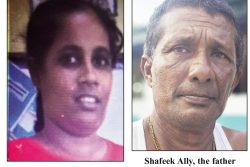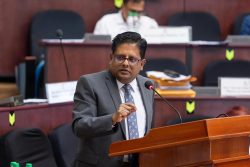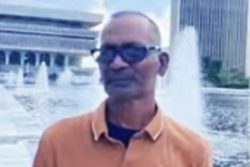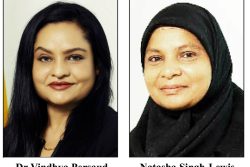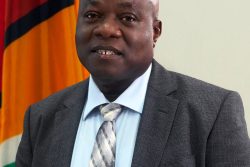The People’s Progressive Party was in a tizzy over the publication of the results of the Guyana Public Opinion Survey which claimed that it had lost political support since its victory in the 2006 general elections.
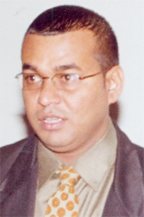
The party accused the Stabroek News of publishing the results of what it calls a “bogus poll.” In an official statement, the PPP dismissed the survey as “…the beginning of campaign by certain opposition forces to confuse and mislead the masses of Guyana…This type of bogus poll…reflects the desperation of some sections of the opposition as it notes the big and enthusiastic reception that the PPP/C is getting wherever it goes.” Alluding to the staged scenes of a recent rural outreach of the Cabinet as recorded in the Government Information Agency press releases, the statement asserted that the popularity of the party and the administration had “never been so high.”
Mohamed Sattaur, Chief Executive Officer of the state-owned National Communication Network, wrote critically of the survey, suggesting that its aim was to generate “media effects…stories or items presented with a specific intent to manipulate or affect the public.” He insinuated, also, that some political campaigns and special-interest groups have used a technique called ‘push polls’ as a form of “political manipulation hiding behind the smokescreen of a public opinion survey but have the objective only of disseminating false or misleading information.”
Public opinion is itself the best ‘media effect’ as the survey which so angered the PPP showed. Conducted by the Barbados-based Caribbean Development Research Services Inc – CADRES – the survey was based on the political opinions of approximately 1,000 Guyanese voters who were randomly selected and interviewed in all ten administrative regions in March this year. According to CADRES, in each instance the sample was proportionate to the percentage of the population that actually lives in the respective administrative region. The results could be said to be a “reasonable indicator” of public opinion at the time it was conducted.
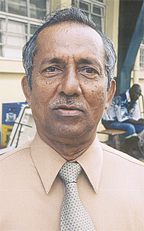
The Guyana Public Opinion Survey set out “to sketch the political state of affairs in Guyana and advise on how those circumstances might best be approached to achieve political objectives associated with regime change.” In this regard, it has been a useful addition to the national political discourse. It has allowed voters to form judgements about the main parties which are unfiltered by the state information services which present the news from a distinctive PPP slant.
The Stabroek News began publishing the survey’s results earlier this month. They showed that the People’s Progressive Party-Civic continued to command the single largest bloc of voters but had lost significant support since 2006. The poll projected the PPP/C’s overall support at 38 per cent, PNCR’s at 31 per cent and the AFC’s at 26 per cent. When respondents were asked directly which party they would support if an election were held at the time of the survey in March, the PPP/C received support from 25 per cent, the AFC 25 per cent, the PNCR 23 per cent and other parties, 3 per cent. Respondents in the “Don’t know-won’t say” category accounted for 24 per cent – an amount that is sufficiently large to affect the outcome of an election.
The swing analysis – which purported to show the relative decline of support for the PPP/C and the PNCR and the gain made by the AFC – indicated that the AFC was “the political party that the populace has taken the most interest in over the last four years. While the AFC continued to be the smallest of the three big parties, the survey suggested that it had captured the interest of Guyanese over the past four years, attracting voters who defected from the PPPC and PNCR.
The analysis of the data on the basis of race disclosed that the PPP/C’s support base is still predominantly Indian-Guyanese, PNCR’s is still largely African-Guyanese, AFC’s is mixed, albeit more inclined towards African-Guyanese and smaller parties’ supporters were more mixed. Data on the basis of age showed that the PPP/C’s supporters were relatively evenly spread across all age groups; PNCR’s tended to be older and the AFC’s tended to be younger.
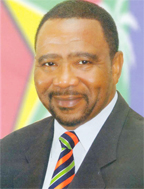
The analysis of the data on the basis of leadership indicated that PPP/C’s Bharrat Jagdeo remained the most popular national leader. AFC’s Raphael Trotman, PNCR’s Robert Corbin and Winston Murray and Joseph Singh (who was not supported by a party) followed. PPP/C’s Robert Persaud and AFC’s Khemraj Ramjattan came next. In addition to selecting the preferred leader, respondents were asked to rate each individual candidate – regardless of whether he or she was their choice of leader. The results, in descending order of popularity were – AFC’s Raphael Trotman, PPP/C’s Bharrat Jagdeo, PNCR’s Robert Corbin and Winston Murray, AFC’s Khemraj Ramjattan, Joseph Singh, AFC’s Sheila Holder, PPP/C’s Robert Persaud, Donald Ramotar and Ralph Ramkarran, WPA’s Roopnarine and, finally, GAP’s Paul Hardy.
The analysis of the data on the basis of governance indicated that the PPP/C’s major strength was its ability to improve infrastructure and enhance the economy. Asked to identify the national issue of greatest concern to them, 43 per cent of respondents reported that they were concerned most about the cost of living and 13 per cent were concerned about employment. The survey added that the single largest group of respondents identified that they were concerned about crime as a non-economic issue. The survey found that 83 per cent of respondents generally agreed that civil society and the people in general should have more of a say in the country’s day-to-day decision-making. The majority were of the opinion that the AFC would be more likely than the PPP/C and PNCR to provide opportunities for the participation of civil society and the population in general.
The broad conclusion that the survey reached was that, from the opposition perspective, the best chance of electoral success was in the formation of some sort of political “alliance.” No single opposition party was seen to be sufficiently well organised, or to command a majority on its own, to threaten the PPP/C’s dominance. The number of voters who refused to state their political opinion, therefore, was statistically significant. Many of those persons were African-Guyanese who, it was assumed, would be expected to support the PNCR but, based on current trends, could be influenced to support the AFC.
The Guyana Public Opinion Survey, however, has its limitations. Although it may presage the likely outcome of the next elections, it has also revealed evidence of the crystallisation of the electorate’s attitudes. The purpose of surveys, of course, is to do just that – to discover the attitudes and opinions of the general public and to shape the collective understanding of what the public thinks and wants.
The gap between perception and reality bedevils modern politics in this country. That is particularly true during the approach to a general election in an environment where the pervasiveness of communication is matched only by the shallowness of information. The outcome of the survey was a case in point. It challenged the flood of information
from the Government Information Agency and the state-controlled Guyana Chronicle newspapers and National Communications Network television.
Despite the party’s noisy response to the survey, PPP apparatchiks should do some serious self-examination in order to explain how the collapse in its support occurred. Old cracks along the party’s fault lines have reappeared. The party is riven by rivalry and next year’s national elections have become deeply polarizing at its highest levels. Nearly eighteen years after four consecutive PPP presidents, the emotional euphoria of the party’s triumphal 1992 re-entry to office has evaporated. Grim reality has replaced dreamy expectations.
At the core of the PPP’s problems has been the failure of leadership that followed Mrs Janet Jagan’s death. It was only a few month’s ago that the People’s Progressive Party celebrated the sixtieth anniversary of its founding. It unveiled an expensive and elaborate year-long programme for its anniversary observances with the opening or activation of offices in all of the regions. But the row about leadership has already spoilt the anniversary party.
Mr Bharrat Jagdeo, a genuinely popular President who took over from the unpopular Janet Jagan, has squandered the PPP’s goodwill. He has committed an extraordinary number of gaffes – the absurd billboard campaigns, the third-term campaign fiasco, the public row over his bizarre marriage, the personal comments on prominent and respected citizens – have all damaged his standing with the press and the public and tarnished the prestige of the presidency. Uncertainty about Mr Jagdeo’s attitudes has raised doubts about the party’s eligibility for five more years in office.
Media scrutiny of the PPP, especially in the blogosphere, has expanded. Despite the administration’s tight control of the state-owned newspaper and television station and GINA’s servile reportage, the public is better informed than twenty years ago and can come to its own conclusions about what is happening in the country. The PPP’s contemptuous dismissal of every criticism about its record of human rights and governance – both by international organisations and domestic civil society and its disdain for conducting independent investigations into frightening reports of torture, death squads and extra-judicial killings, particularly during the troubles on the East Coast – have engendered widespread despondency. The people are afraid.
The People’s Progressive Party should not be surprised that, after nearly eighteen years in office, the tide of public opinion has turned. It should start to accustom itself to the prospect of regime change which 69 per cent of the people surveyed say they want.

